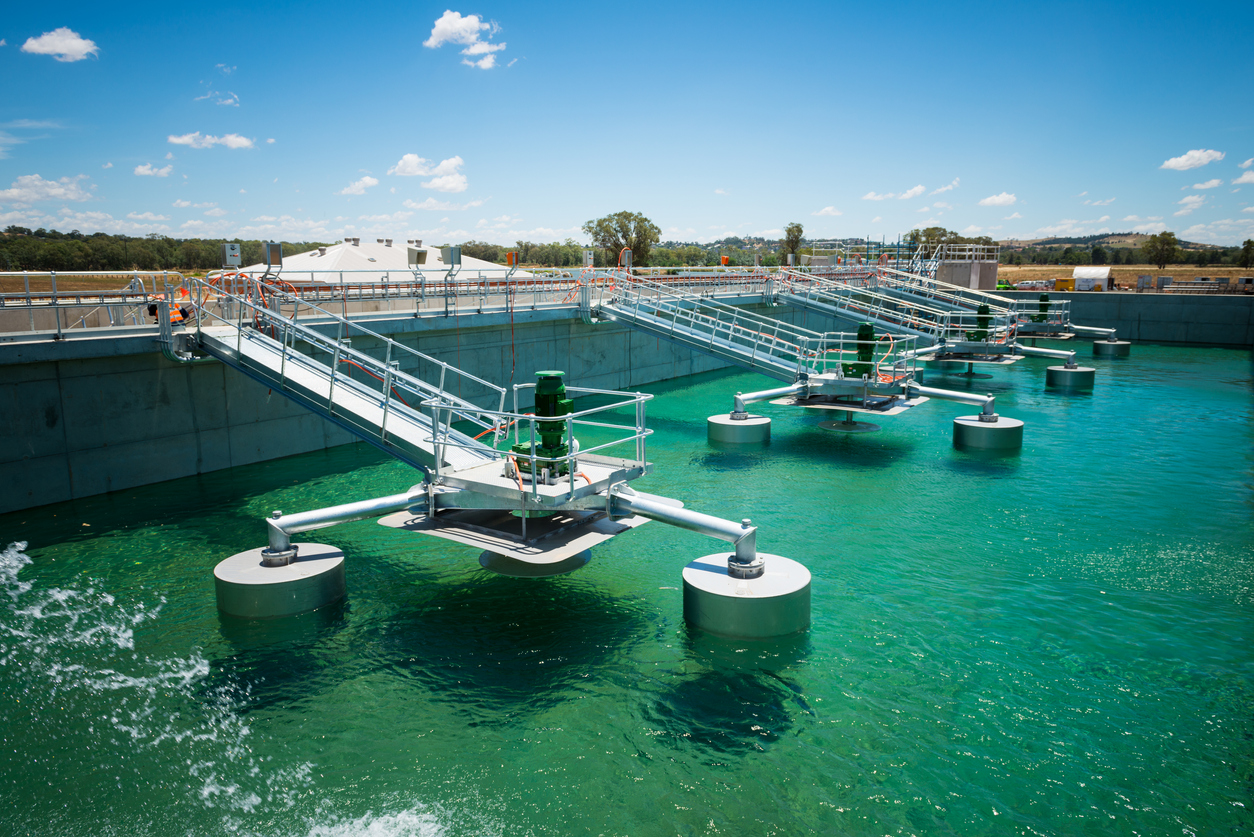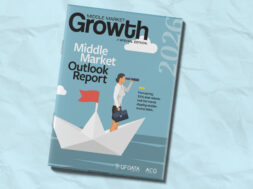Water and Electricity Are a Safe Mix in Infrastructure PE Portfolios
Fueled by federal funding and a need for new, sustainable solutions, the infrastructure space is proliferating, but in need of private capital to thrive

Water and electricity don’t mix—except in private equity portfolios.
Producing, storing and managing those two commodities has emerged at the center for middle-market portfolios for infrastructure-focused private equity firms. Buoyed by both Federal funding and urgent climate-change responses, the infrastructure space—including water, energy and a diverse landscape of other growing niches—is proving that if you want to build it, equity will come.
Much of the inertia behind that push begins with the public sector. The Biden administration placed infrastructure replacement and renovation to the top of its priority list in 2021 with the passage of the Infrastructure Investment and Jobs Act, which, channels billions of dollars to infrastructure projects across a wide swath of sector niches. They include clean energy, broadband and water treatment, as well as projects to replace and build bridges, roads and railways.
Three years later, those big-picture priorities are translating into individual projects only now beginning to get off the ground. That means sales, revenues and growth for the engineering firms that design and manage projects; the companies that make, sell and lease equipment and materials; and construction companies that convert plans and materials to finished roads, bridges, towers, pipes and other systems. And while the public sector may have kickstarted these projects, private sector businesses and PE investors stand to benefit from the infrastructure industry’s growing momentum.
“Some federal money is being matched by state and local governments and private investors,” says Emily Shaw, vice president of mergers and acquisitions with the Environmental Financial Consulting Group, which works with architecture, engineering and consulting firms. Such firms are where infrastructure projects start, and where materials and project parameters are defined for contracts. “As those projects filter down through the system, and are awarded through local government agencies, that’s where our clients have opportunities.” EFCG advises firms on growth strategies, including assessments of timing and readiness for PE investment.
Some federal money is being matched by state and local governments and private investors. As those projects filter down through the system, and are awarded through local government and agencies, that’s where our clients have opportunities.
Emily Shaw
Environmental Financial Consulting Group
Water Flows with Equity
A lot of water comes out of the ground along with crude oil.
Typically, that water is channeled into a disposal well. But to nearby farmers, that water is priceless—if someone would only clean it up and send it their way.
In California, that somebody is Renovo Resources LLC and its private equity sponsor Tailwater Capital.
CEO Lnsp Nagghappan and a cadre of former coworkers, most of them engineers, saw a chance to treat the water as a valuable commodity in itself. In 2022, they formed Renovo with a lift from Tailwater. Their goal is to generate a new source of fresh water for farms and industry by treating the dirty water that’s a byproduct of extracting oil.
The company is “pre-revenue,” says Nagghappan, with multiple projects in the works. Not surprising, given that infrastructure projects can take years to launch; he expects the first contract to be signed by the end of this year. “It takes patience to build such large projects,” he says. But the other side of the long arc is a long payout, with revenue streaming from both oil companies and water users.
Renovo is just one unique example within a burgeoning water infrastructure sector, an increasingly attractive target for PE investors thanks to its size and fragmentation.
Related content: Water Utilities Investors Take On Climate Change
A 2023 report from consulting firm Bluefield Research outlines in broad strokes the scope of the water and wastewater infrastructure market, which it values at $997 billion. The country’s 48,000 community water systems and 23,000 wastewater treatment plants are gradually consolidating through privatization and through shared services among municipalities, the report notes.
In January, Atlas-SSI, backed by PE investor XPV Water Partners, bought ABASCO, which provides water containment barriers and associated services. It was the third such acquisition by Atlas-SSI since early 2023. Before that, in November, Aclarty Inc. won a $15.9 million Series A round from a consortium of private investors committed to water technology. Aclarity’s products and services are geared to erase “forever chemicals’ from water.
The Bright Spot of Energy Infrastructure
Middle-market PE portfolios are also quickly filling up with energy-related investments, with experts pointing to modernization and sustainability as a key factor behind the sector’s growth.
“The focus on grid renewal, electrification and infrastructure resilience is incredible. We’re at the tip of the iceberg for addressing aging infrastructure and for transitioning the grid to be more resilient and more green,” says Environmental Financial Consulting Group’s Shaw.
Batteries and energy storage fueled 44 private equity deals totaling $5.2 billion in the first three quarters of 2023, according to Pitchbook—representing steady growth since a fallback four years ago. In November, Kohler Co., announced that it was working with Platinum Equity to spin off its energy storage and generator business, which includes a variety of industrial brands. And Volery, a private equity firm that specializes in “energy transition,” was itself taken over by Sustainable Development Capital LLP that same month.
The energy infrastructure market has multiple goals with new injections of capital, including meeting growing demand and evolving to become more sustainable. Reorienting the grid to support greater electrical capacity for industrial, commercial and residential use is fundamental to quashing carbon emissions and that transition, says Jake Erhard, a partner with middle-market private equity firm ArcLight Capital Partners LLC.
But that reorientation is no easy task, and requires consulting and engineering services that enable established firms to transition to all-electric and renewable energy sources. “There’s a limited amount of special expertise that can provide that service,” says Erhard, This also means there is an emerging pocket within the energy industrials space in need of outside support, including PE backing. “[This reorientation] translates to growth for companies in engineering and construction, especially those with exposure to electrical contracting and transmission.” Two categories that are benefiting, he adds, are battery storage and distributed energy. What’s more, behind the scenes are software firms that create, sell and support the systems that forecast, manage and balance power flow.
When it comes to reorienting the grid, building new storage capacity to even out erratic flows of electricity from solar and wind power is a pressing priority. But there could be a shortcut that presents another avenue for PE backing, says Erhard.
Existing brownfield utility sites are sites at which infrastructure is already built but not nonoperational, or are operational but can be adapted for additional functionality, including new forms of energy transmission and storage, to coexist with existing structures. This puts the power right next to the industries and municipalities that need it, and offers a chance to wield old infrastructure for new purposes.
In Long Beach, CA, a 19-acre brownfield site now supports bright lights to the city and its ports, Erhard says. A small gas-powered power plant long used as a power back-up has occupied the site for decades, he explains. Now, through one of ArcLight’s investments, the site is being redeveloped to include charging stations for the electric vehicles that serve the port.
Related content: The Interconnected Ecosystem of Environmental, Power and Infrastructure Services
Brownfields of all sizes are ripe for redevelopment as part of the “distributed grid,” Erhard explains, because they are poised for fast conversion to the electrical grid. “You have real estate control and interconnectivity to the power grids, stakeholder relationships and operating permits, and those are real advantages,” especially compared to building new distributed resources from scratch, he says.
Finding the Right Niches
Part of the investment appeal of infrastructure can be uncovered in its diversity, which reaches far beyond water and energy.
Nonresidential building, for instance, totaled $1.74 trillion in 2023 on a seasonally adjusted basis, according to the Associated Builders and Contractors. Services related to this segment of the market, including repair and maintenance, are also strong focuses for private equity investors.
Sustainability is also fueling growth for the nonresidential building space, which is retooling to hit an early target set by the International Energy Agency that new buildings and 20% of existing structures achieve zero-carbon status by 2030. But, the energy’s capacity is hampered by a workforce shortage and an erratic supply chain—factors that elevate the sector’s need for outside capital.
After scrutinizing 24 infrastructure subsectors, Tailwater Capital has zeroed in on several niches, including water, energy and growth infrastructure, according to partner Joel Fry. “We’re supremely interested in carbon-capture utilization and storage,” especially given that Federal contracts frame the revenue for such operations, he says.
Telecommunications is on a roll of its own, with spending on infrastructure up 19% year-over-year in 2022 to $102.4 billion, the latest numbers available, according to data collected by US Telecom, which represents the broadband industry. In February, Everbridge, Inc., was acquired by PE firm Thoma Bravo in a $1.5 billion deal; Everbridge designs and manages public safety crisis and communication systems, which of course pivot on telecommunications infrastructure.
Roads, bridges, railways and other built-environment spending, meanwhile, is increasing at roughly the pace of inflation, according to a 2024 outlook report by Deloitte. Earlier this month North American Rail Solutions subsidiary American Track, a portfolio company of DFW Capital Partners, acquired West Rail Construction. North American Rail Solutions provides industrial rail inspection, construction and maintenance services.
It’s bottlenecks (where investors can find potential)—where does demand exceed supply across infrastructure, and where does capital come in to level the playing field?
Joel Fry
Tailwater Capital
Tailwater’s Fry says the infrastructure investment opportunities can be found in nearly any niche facing industry-wide challenges: a need to modernize and repair, meet rising demand and pursue sustainability.
“It’s the bottlenecks (where investors can find potential): where does demand exceed supply across infrastructure, and where does capital come in to level the playing field?” Fry says. A recent Tailwater investment in a natural gas storage field showcased the potential for private equity investors to help the energy infrastructure space meet demand. The firm acquired Texas-based NorTex in February 2021; soon after, winter storm Uri hit the region and knocked out power. But the storage. field’s ready-to-tap gas kept the affected region going—and teed up a rapid and profitable sale in 2022 to gas distribution company Williams Field Services Group.
The exit plan is integral to infrastructure investments, too, he adds, especially given that the speed of growth and consolidation across the industry accelerates the cycle for private investors. “You need to believe that ultimately the asset that you’re building will be owned by some other counterparty,” he says. “We’re telling these companies, ‘You need to focus on who ultimately wants this business.’”
Joanne Cleaver has been covering entrepreneurship and business growth for over 30 years for national media, as both a staff and freelance journalist.
Middle Market Growth is produced by the Association for Corporate Growth. To learn more about the organization and how to become a member, visit www.acg.org.


